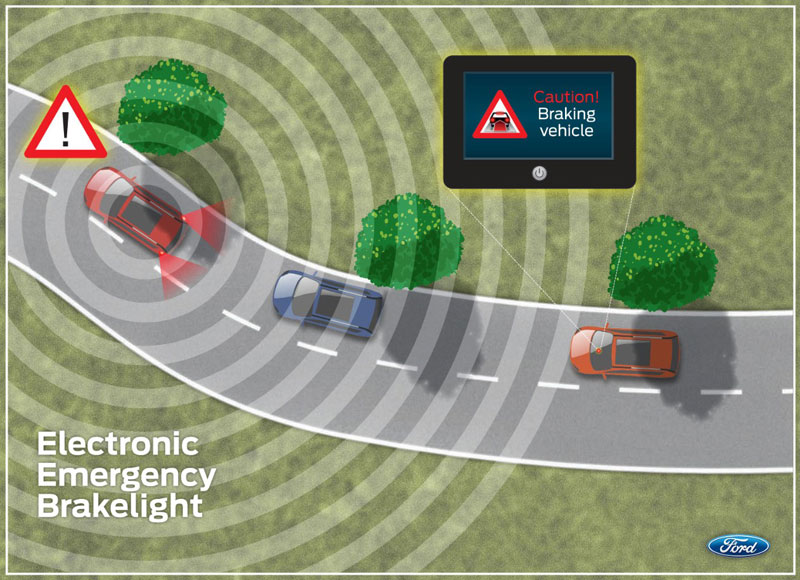- Ford to present results of a three-year research project to help pave the way for next generation car-to-car and car-to-infrastructure communication systems across Europe
- European Commission-funded DRIVE C2X programme shows potential for drivers to receive detailed, real-time data that could help them avoid traffic and accident locations
- Ford developed and tested Electronic Emergency Brake Light and Obstacle Warning that alert drivers to vehicles braking and other road obstacles – even around corners
- 750 drivers and 200 cars, including more than 20 Ford S-MAX and Mondeo models, were employed in car-to-infrastructure testing on public roads and on test tracks
Ford Motor Company will today present its findings from a three-year research project into car-to-car and car-to-infrastructure communication technologies that could deliver early warnings of hazards, reduce congestion and improve road safety.
As a leading partner in DRIVE C2X – a European Commission-funded research project involving key automotive stakeholders – Ford has explored the potential for drivers to receive detailed, real-time hazard information at the wheel using cooperative communication systems.

The DRIVE C2X research project – which holds its final event in Berlin today – has made significant progress towards delivering future intelligent transport systems that could help drivers avoid traffic jams and accident locations using information shared by other vehicles on the road.
“Car-to-car and car-to-infrastructure communications represent one of the next major advancements in vehicle safety and efficiency,” said Pim van der Jagt, executive technical leader, Research & Advanced Engineering, Ford of Europe. “Ford is committed to further real-world testing here and around the world with the goal of implementation in the foreseeable future.”
Based on advanced WIFI communication for intelligent transport systems, Ford led the development of Electronic Emergency Brake Light and Obstacle Warning among testing many other car-to-infrastructure communication features.
The experimental Electronic Emergency Brake Light alerts drivers even around corners and through traffic. In emergency braking situations, the system transmits a wireless signal to warn the drivers in cars following behind. Ford found the technology could also enable drivers following to brake earlier and potentially mitigate or avoid a collision.
Ford’s experimental Obstacle Warning technology alerts to the presence, position and type of potentially hazardous objects in the road, such as pedestrians, animals or a broken down vehicle.
Around 750 drivers, and 200 vehicles were involved in the DRIVE C2X project – including more than 20 Ford S-MAX and Mondeo models. These were employed in car-to-infrastructure testing in real-world conditions on public roads and in a controlled environment on test tracks at seven sites across Europe – Finland, France, Germany, Italy, the Netherlands, Spain and Sweden. The project investigated the European harmonisation of the cooperative communication systems with a view to paving the way for a future market introduction.
The DRIVE C2X project, which began in January 2011, was conducted by 34 research partners including automotive manufacturers, suppliers, research institutes and road operators. It received €12.4 million funding from the European Commission, as well as support from EUCAR and the Car2Car Communication Consortium.
“The introduction of the next generation of driver assistance and vehicle safety systems requires automotive and communication industry-wide cooperation,” said Christian Ress, technical expert, Ford Research and Advanced Engineering. “As a project partner in DRIVE C2X and a member of the Car2Car Communication Consortium, Ford is making significant progress towards making these advanced features a reality for drivers.”

